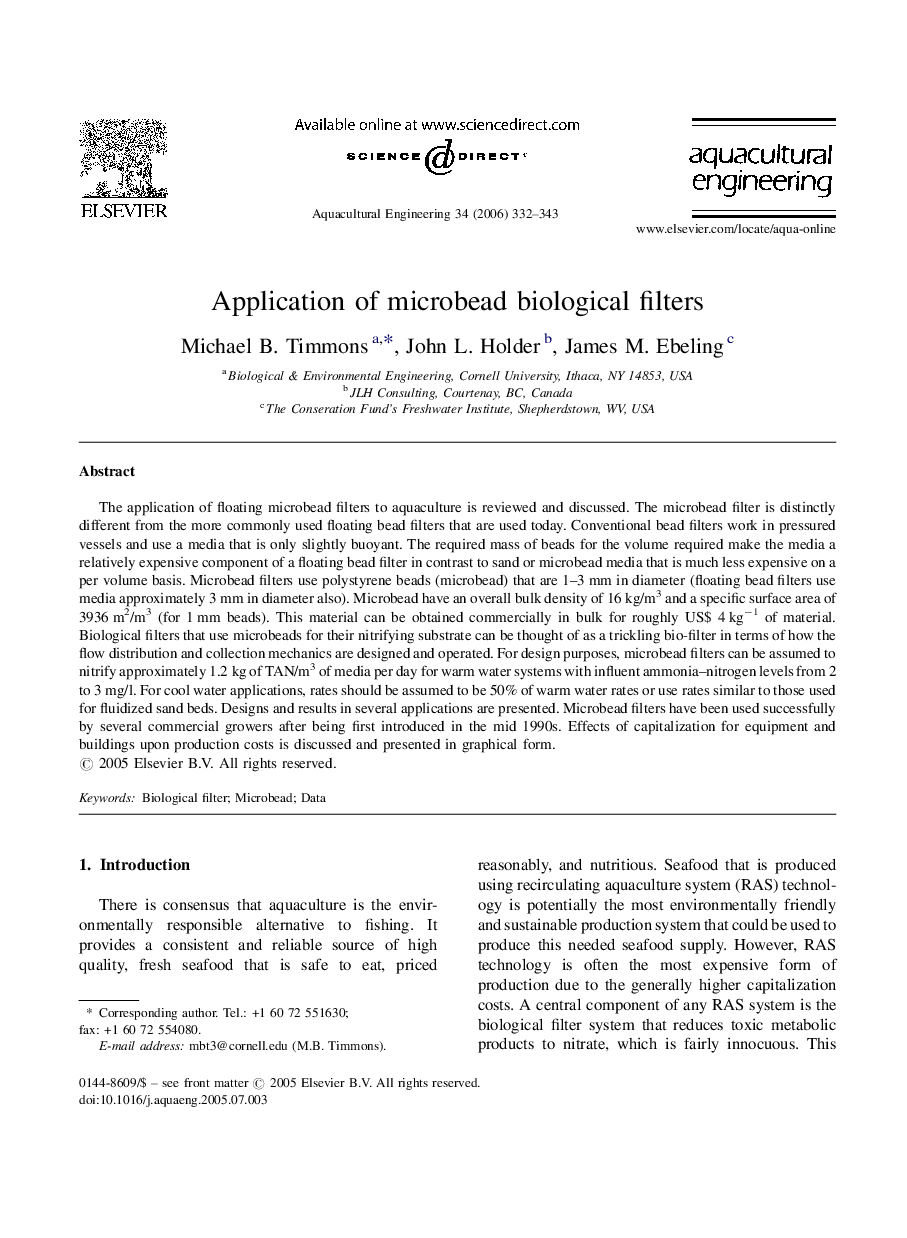| کد مقاله | کد نشریه | سال انتشار | مقاله انگلیسی | نسخه تمام متن |
|---|---|---|---|---|
| 6381678 | 1324117 | 2006 | 12 صفحه PDF | دانلود رایگان |
عنوان انگلیسی مقاله ISI
Application of microbead biological filters
دانلود مقاله + سفارش ترجمه
دانلود مقاله ISI انگلیسی
رایگان برای ایرانیان
موضوعات مرتبط
علوم زیستی و بیوفناوری
علوم کشاورزی و بیولوژیک
علوم آبزیان
پیش نمایش صفحه اول مقاله

چکیده انگلیسی
The application of floating microbead filters to aquaculture is reviewed and discussed. The microbead filter is distinctly different from the more commonly used floating bead filters that are used today. Conventional bead filters work in pressured vessels and use a media that is only slightly buoyant. The required mass of beads for the volume required make the media a relatively expensive component of a floating bead filter in contrast to sand or microbead media that is much less expensive on a per volume basis. Microbead filters use polystyrene beads (microbead) that are 1-3Â mm in diameter (floating bead filters use media approximately 3Â mm in diameter also). Microbead have an overall bulk density of 16Â kg/m3 and a specific surface area of 3936Â m2/m3 (for 1Â mm beads). This material can be obtained commercially in bulk for roughly US$ 4Â kgâ1 of material. Biological filters that use microbeads for their nitrifying substrate can be thought of as a trickling bio-filter in terms of how the flow distribution and collection mechanics are designed and operated. For design purposes, microbead filters can be assumed to nitrify approximately 1.2Â kg of TAN/m3 of media per day for warm water systems with influent ammonia-nitrogen levels from 2 to 3Â mg/l. For cool water applications, rates should be assumed to be 50% of warm water rates or use rates similar to those used for fluidized sand beds. Designs and results in several applications are presented. Microbead filters have been used successfully by several commercial growers after being first introduced in the mid 1990s. Effects of capitalization for equipment and buildings upon production costs is discussed and presented in graphical form.
ناشر
Database: Elsevier - ScienceDirect (ساینس دایرکت)
Journal: Aquacultural Engineering - Volume 34, Issue 3, May 2006, Pages 332-343
Journal: Aquacultural Engineering - Volume 34, Issue 3, May 2006, Pages 332-343
نویسندگان
Michael B. Timmons, John L. Holder, James M. Ebeling,